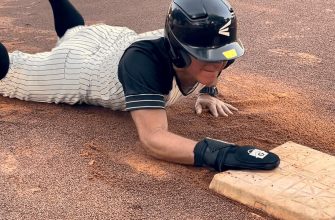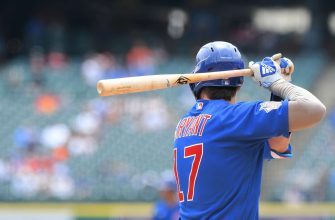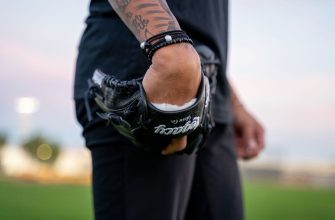Arm sleeves have become ubiquitous in Major League Baseball over the past decade. While sleeve use was relatively rare in the 1990s and early 2000s, a study in 2018 found that over 75% of MLB position players were wearing sleeves during games. This dramatic increase sparks curiosity – why are so many players now wearing sleeves when most went sleeveless just a decade ago?
History
The use of arm sleeves in baseball dates back to the early 1900s. According to the source, baseball players first began wearing wool sleeves on their throwing arm as a way to keep their arms warm and protected from the elements. The sleeves provided an extra layer of insulation and absorbed moisture during games.
In the early days, the sleeves were simple wool tubes without any compression or specialized fabric. They were purely functional garments to battle the cold. The first sleeves were most commonly worn by pitchers to keep their throwing arms warmer. Hitters would also wear sleeves on their lead arm when batting.
It wasn’t until the 1970s that sleeves evolved into more performance-oriented garments. Companies like Under Armour emerged providing compression sleeves made of spandex and polyester. This brought new benefits like keeping muscles warm, reducing fatigue, and preventing injury. The compression allowed improved blood flow and recovery. Arm sleeves entered the mainstream and became integrated into baseball uniforms.
Injury Prevention
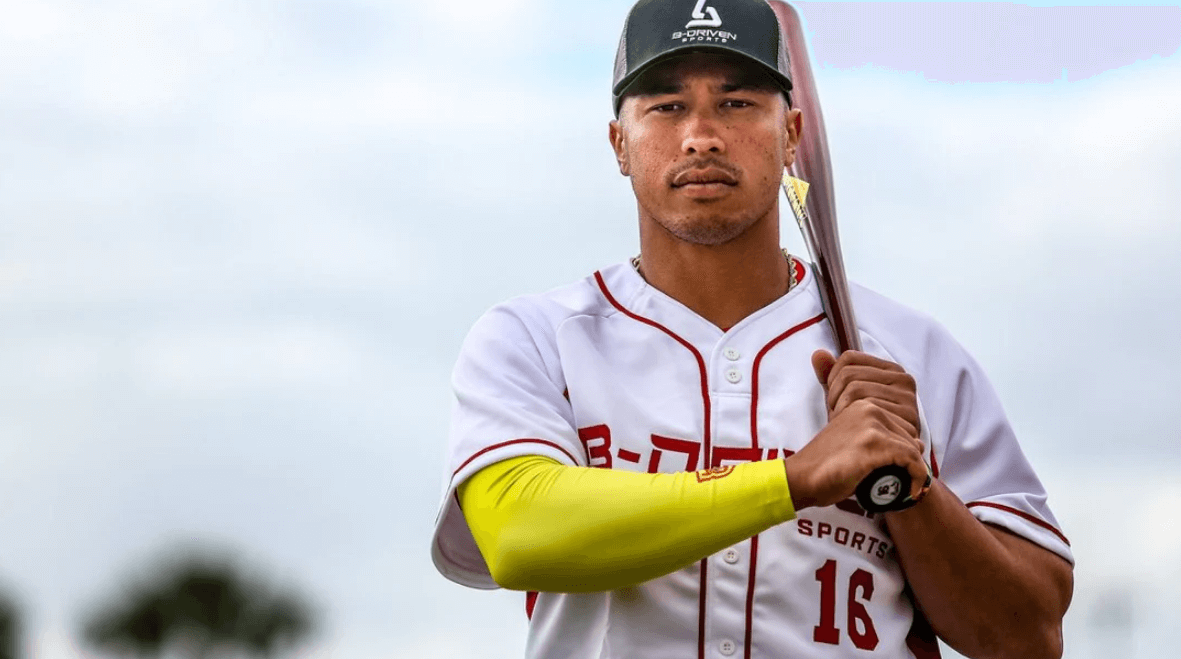
Baseball players wear arm sleeves to help prevent injuries to their throwing arm. The repetitive motion of pitching puts a lot of strain on the elbow and shoulder joints, which can lead to inflammation and injury over time. The compression provided by arm sleeves improves circulation and reduces swelling around the joint, acting like a “soft cast” to support the arm.
This helps stabilize the joint and prevents overextension or strain that could cause damage. The compression also keeps the muscles warm and loose, reducing the risk of pulls or tears. By supporting the arm and improving blood flow, sleeves can help pitchers maintain velocity and control while avoiding serious injury from overuse.
Compression
Compression sleeves work by applying gentle pressure to the arm muscles and improving circulation and blood flow. The compression helps push more oxygenated blood into the muscles while flushing out lactic acid, reducing fatigue and allowing players to maintain their energy longer.
The improved circulation can also help reduce swelling and soreness after intense practice or games. Overall, the compression provides supportive pressure that can enhance performance, prevent injury, and speed recovery.
Warmth
Cold weather can quickly cool down a baseball player’s arm muscles, reducing strength and control. Pitchers in particular need to maintain optimum muscle temperature in their throwing arm to deliver pitches with velocity and accuracy. Arm sleeves help trap heat against the skin, keeping muscles warm and loose.
Made from moisture-wicking fabrics like polyester or spandex, arm sleeves create an insulating layer to retain body warmth. The snug fit hugs the arm to prevent cold air from reaching the skin. Arm sleeves are often worn during night games, early season games in cold climates, and for pitchers coming in from the bullpen. The extra insulation allows pitchers to maintain muscle warmth despite being inactive in the bullpen.
Some companies even make arm sleeves with thermal fabrics to provide extra protection against the cold. Thermal arm sleeves have interior fabric coatings that reflect body heat back to the skin. This helps players battle stiff, sore muscles by keeping the arms as warm as possible on cold days.
Absorption
Baseball players wear arm sleeves to absorb sweat and keep their arms dry while playing. The fabrics used in compression sleeves are designed to wick moisture away from the skin. This helps prevent sweat from dripping down players’ arms and interfering with their grip on the bat.
Absorbent fabrics pull sweat from the skin into the fabric through capillary action. As sweat evaporates from the outer layer of the fabric, it creates a cooling effect. This evaporation process allows the fabric to absorb more sweat. Materials like polyester and spandex are commonly used in arm sleeves because they are lightweight, breathable, and excel at wicking.
Staying dry is crucial for baseball players. A buildup of sweat on the arms can make it harder to control the bat and throw accurately. Arm sleeves with moisture-wicking properties help maintain proper grip and comfort during games played in hot and humid conditions. The absorption capacity of performance fabrics also helps prevent skin chafing and blistering from excess sweat. Overall, the sweat-wicking function of arm sleeves gives players a competitive edge.
Fashion
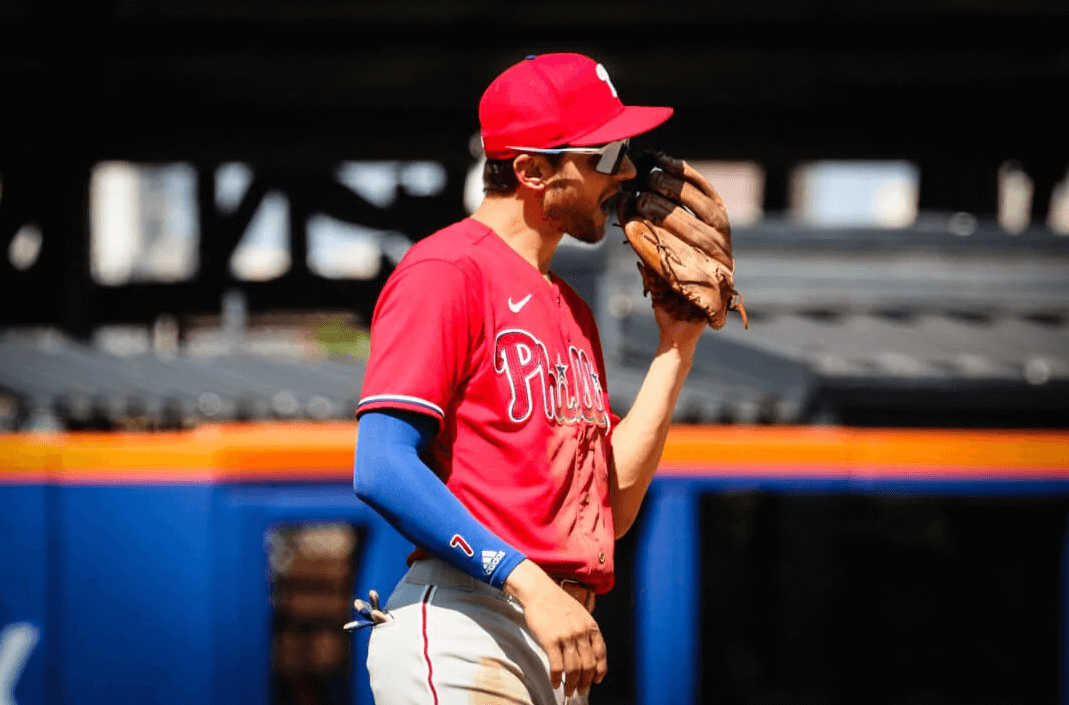
Baseball arm sleeves have become a fashion statement and part of a player’s image. Players often have custom sleeve designs featuring their name, number, team logo, and more. The unique designs allow players to express their personal style and brand.
Some players are known for wearing colorful or patterned sleeves that stand out. For example, MLB pitcher Chris Sale is known for wearing unusual sleeve designs featuring unusual colors and patterns. Other players coordinate their sleeve designs with the rest of their uniform for a cohesive look. Sleeves are part of how players craft their image and identity on the field.
The variety of sleeve designs and colors has opened up new avenues for player self-expression and branding. Arm sleeves have evolved from plain protective gear into an accessory that is part of a player’s signature style.
Superstition
Many players are quite superstitious when it comes to their pre-game rituals and wearing gear for good luck during games. This includes the arm sleeves that have become popular in recent years. Some players believe that wearing the same arm sleeves or wristbands game after game can bring them good fortune. For example, some hitters think that their lucky arm sleeves help them get more hits or home runs. Pitchers may believe that their arm sleeve routine gives them an edge to throw more strikes.
Baseball has always been filled with various superstitious practices by players hoping to improve their chances of success. Batters avoid stepping on baselines, pitchers have set routines before each inning, and infielders toss balls a certain way between plays. Arm sleeves have now become part of many players’ pre-game rituals and superstitions. Whether there is any real truth to these superstitions or not, if the players believe the sleeves bring them good luck, it may provide a mental edge.
Regulations
Professional baseball leagues like MLB have some rules around arm sleeves that players must follow. For example, according to the source, pitchers are only allowed to wear white or gray sleeves that cannot be seen under their uniform.
This prevents pitchers from using sleeves that may distract the batter. Additionally, all arm sleeves in MLB must be of a solid color and cannot have any designs or logos. This helps maintain the professional uniform standards in the league. There are also regulations around sleeve length – they cannot extend past the elbow to the forearm or wrist.
Overall, while MLB does allow arm sleeves, they regulate the color and length to ensure sleeves don’t provide any unfair advantages or violate league uniform policies.
Popular Brands
Player arm sleeves have become part of the identity for some of the biggest brands in sports apparel. Companies like Nike and Under Armour are well-known for their performance sleeves worn by MLB stars.
Nike’s Pro Hyperwarm sleeves provide compression and insulation to keep arms loose and warm in cold weather. Players like Bryce Harper and Mookie Betts wear Nike sleeves in team colors or with bold designs.
Under Armour introduced the first arm sleeve in 2006 and remains an industry leader. Their branded sleeves featuring the iconic UA logo are frequent sights on the field. Notable players sporting Under Armour sleeves include Clayton Kershaw, Aaron Judge, and Javier Baez.
Other top brands for sleeves in MLB include Twin City Knitting (with their solid color Kelly green sleeves), McDavid (known for hexpad protection), and Easton (featuring diamond grip sleeves). As sleeves gain popularity, more players will look to sports apparel companies for the latest performance fabrics and eye-catching styles.


